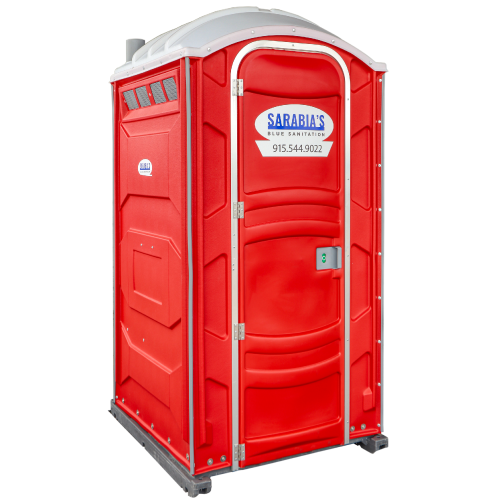
Today, marathons, charity races, construction sites, sporting events, outdoor fairs, conferences, and concerts—not to mention music festivals—would not be the same without the beloved porta-potty. As we attend these fun activities, most people expect porta-potties to be there to the rescue. The modern portable john, of course, is far more sophisticated, sanitary, and comfortable than early iterations of the kind. We thought it might be fun to wander down history lane into how the portable bathroom, in particular, came to be the commodity that it is today.
The first inklings of the portable restroom began with the shipbuilding industry in the mid 20th century. In the early 1940s, crews working on ships would spend way too much time going back on deck to use the facilities. That or the crews that would be forced to be offshore for awhile needed some relief. Someone realized this and it was only a matter of time before the idea of a portable and easy-to-transport toilet would be put to use. The innovation was kickstarted during the era of World War II, where the urgency of the war actually inspired a lot of useful inventions of which we still see today. The home front during the war produced a lot of valuable ideas. These first versions, however, were not very comfortable, as they were constructed of heavy wood or metal and were purely utilitarian. They were heavy, bulky, and difficult to empty. That is, there was not a lot of concern for comfort, sanitation, ventilation, etc.
Duty Calls: Toilets During Wartime
The Elsan ‘chemical closet’ was used by soldiers in the Army and Navy during World War II. This was an early version of a portable chemical toilet.
We’ve all read the incredible stories of war pilots flying bomber aircraft like the P40 Warhawk, the Spitfires, and the B-17 Flying Fortress. These pilots would often have to go on missions from the coast of England to France or Germany. These men were in the air for hours—not to mention in freezing temperatures and facing enemy fire, bad weather, turbulence and more. So how did these brave men use the facilities during these flights? It’s not the typical history lesson but it’s fascinating nonetheless. Most of these fighter planes did not have toilets built into them. Models like the B-17 did have a urination tube that pilots would urinate into and would be released through the side of the aircraft. Many times, however, they did not have time to pay attention to these types of details and would merely let it go where they sat. Some models like the C-47 Dakota are said to have a circular pot-type toilet located at the back of the fuselage.
Another Interesting Fact of History
This one is perhaps a little less of a ‘fun’ fact but seems to be something that actually happened. During the Jim Crow era and the times of segregation, many African Americans were barred from public restrooms. For many, this meant that they carried a portable restroom in the trunk of their car—a place where they would avoid segregation.
Enter Blue Deodorizer
If you’ve ever used a porta-potty and more than likely you have, you have seen the blue liquid that is used down below. Now we know that you don’t exactly want to spend a lot of time looking down there and wondering about the contents beneath the surface, but it’s nice to note that that nifty blue liquid is doing its part to help you have a pleasant experience.
The portable restroom is estimated to save around 125 million gallons of freshwater every day. That’s because the waste is not flushed down with each use so there must be a way to mask the smell and keep it as sanitary as possible. That’s where the blue stuff comes in. That blue stuff is a deodorizer that is meant to cover that smell as much as possible. The four main components of that blue deodorizer include:
- Biocides: These are the “active ingredients” which stop the growth of odor-producing gram-positive bacteria. The biocides shut down these odor-producing bacteria.
- Dye: A way to visually obscure the contents at the bottom.
- Fragrance: The added fragrance will stop any residual odors and provide a fragrance that improves customer experience.
- Surfactants: These are hydro-tropes used to make fragrances able to be dissolved into water to create a homogenous mixture.
Rock and roll and bell-bottom pants were not the only things that emerged in the 1970s. During this decade, there were plenty of advancements to the portable restrooms that improved its sanitation, cleanliness, and transportation. Fiberglass became the material of choice for a moment until it was clear that the material was fragile (thus prone to breaking) and also absorbed odors. Then came the polyethylene portable restroom that was first put on the market. This immediately made the porta-potty much more durable, lighter, and easier to move. The material is simply far more resilient and offers the durability and reliability needed for something like the portable restroom.
When Choosing Portable Johns, Choose the Potty Pros at Sarabias
Here at Sarabias, we have been working for years to ensure quality and satisfaction with our portable restrooms. Whether you are planning an event or need them for a construction or clean-up site, we are here to help you find the right options.









